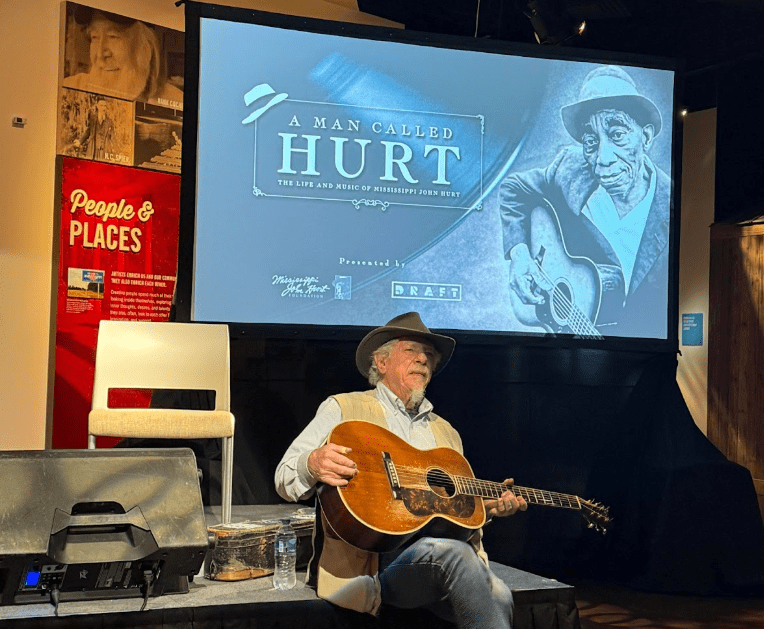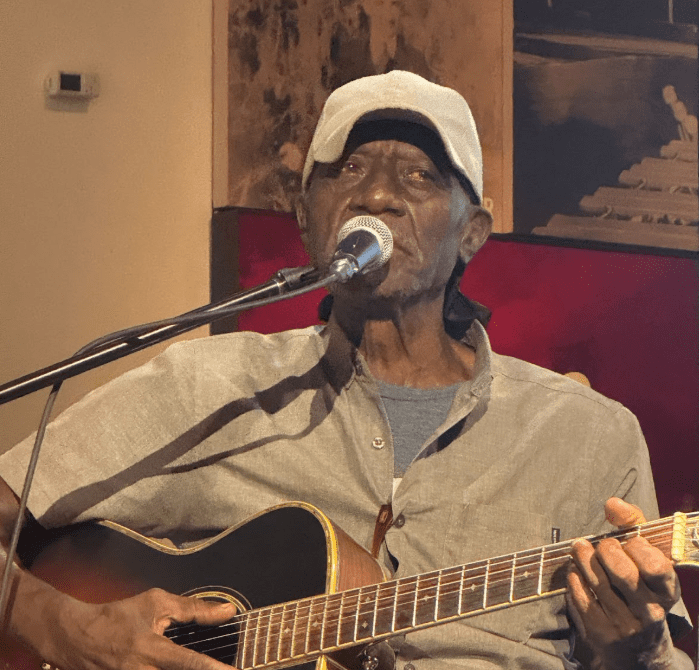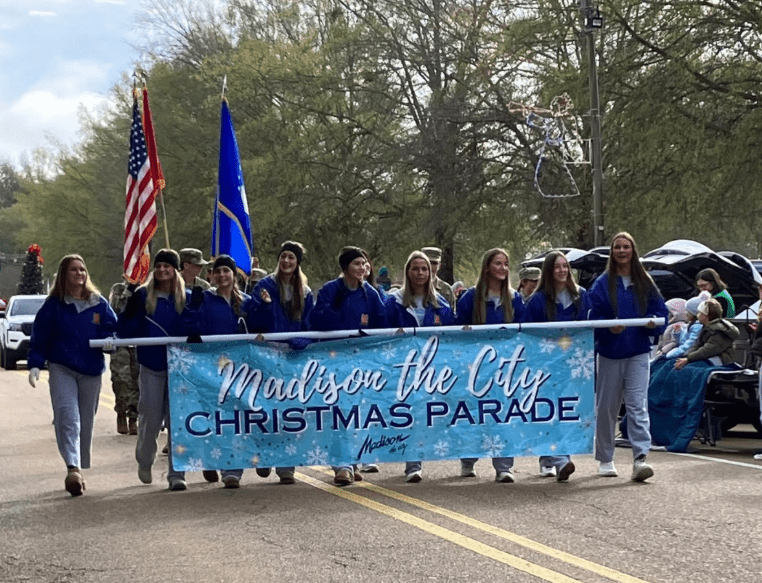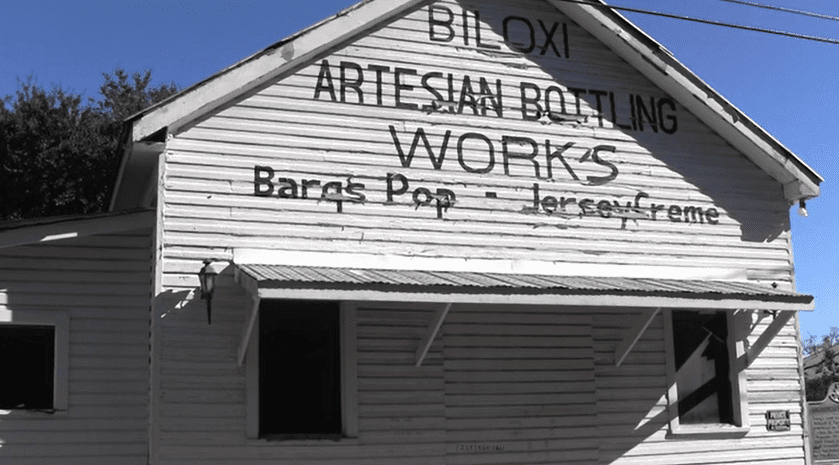
(Photo by Susan Marquez)
- Hurt was an unsung hero of both folk and blues music, with a distinctive self-taught three-finger picking style.
There was a full house at the Mississippi Arts & Entertainment Experience (also known as The MAX) in Meridian last week for the opening night of the week-long Jimmie Rodgers Music Festival. The evening of music featured a screening of a full-length documentary on bluesman Mississippi John Hurt, a Carroll County native who inspired artists around the world. The film, A Man Called Hurt: The Life and Music of Mississippi John Hurt, was a partnership with the Jimmie Rodgers Festival and the John Hurt Foundation and accompanied the MAX’s latest exhibit, Mississippi John Hurt: Legend of Avalon.
Hurt was an unsung hero of both folk and blues music, with a distinctive self-taught three-finger picking style. His music impacted blues and folk musicians, including Bob Dylan, Taj Mahal, Jerry Garcia, and John Sebastian of The Lovin’ Spoonful, a band that named itself after a John Hurt tune.
In 2023, Rolling Stone magazine included Hurt on its list of Greatest Singers of All Time. After being discovered by Okeh Records in 1928, Hurt went to New York and recorded six albums. He returned home to Avalon to await more work, but it would be 35 years before he was “rediscovered” in 1963, when he moved to Washington, D.C. and became the center of the folk movement, performing for thousands of fans at folk festivals around the country.
For three years, Hurt performed extensively—spreading Mississippi culture at colleges, concert halls, and coffeehouses, in appearances on The Tonight Show, Pete Seeger’s show, Rainbow Quest, and featured in TIME magazine. Although he only spent a short time in the spotlight before his death, Mississippi John Hurt’s impact on American music is so important that it has been preserved in perpetuity at the Library of Congress.
A Man Called Hurt chronicles the life and influence of Mississippi John Hurt on the music world. The film also reaches beyond his musical impact and explores his humanity through relationships. The film illustrates the importance of John Hurt’s legacy through touching interviews with Hurt’s family and admirers like Happy Traum, Guy Davis, Dom Flemons, and others, while demonstrating the need to protect endangered landmarks and cultural heritage.
In 1997, the Mississippi John Hurt Foundation was established to preserve his Carroll County home as a museum. Hurt’s family moved to the humble three-room shotgun house in Avalon in 1837. Over the years, it became a gathering place for fans who make the pilgrimage for the annual Mississippi John Hurt Music Festival.
On February 20, 2024, the Mississippi John Hurt Museum was named a national landmark. The next day, it mysteriously burned to the ground, along with nearly every remnant of this iconic musician. The items on display at The MAX represent nearly everything that survived, including the hat that John Hurt always wore while performing.
A Q&A session was held after the screening with the filmmakers and producer, Paul West, along with John Hurt’s granddaughter, Mary Frances Hurt.
Blues scholar Scott Barretta said, “Mississippi John Hurt was, like Jimmie Rodgers, a master of various musical styles. His respect for the music of Jimmie Rodgers was reflected in his use of the melody of Waiting for a Train for his own Let the Mermaids Flirt with Me, and I have no doubt that Rodgers enjoyed Hurt’s contemporary records.”
A performance by the legendary Jimmy “Duck” Holmes closed Monday night’s event. The Grammy-nominated artist is the last of the original torchbearers of Bentonia blues, cofounder of the Bentonia Blues Festival, and proprietor of the famous Blue Front Café—the oldest surviving juke joint in Mississippi.












